Last Updated on July 9, 2025 by teamobn
Water features are always an exciting addition to a garden. You can turn an otherwise nondescript little space into an oasis with the right kind. This could be a small pond you make yourself using a liner, a bubbling gravel fountain, a large raised fountain, or a garden fountain. You can set up a water feature with descending pools, densely planted, and with little aquatic touches such as ceramic frogs and snails.
Want a fountain in your garden, but don’t have a definite design just yet? Have a look at some examples we’ve gathered for inspiration…
Building a DIY Garden Fountain
A Garden fountain can contribute a further level of peace to your garden area. A Garden fountain produces a magical atmosphere that transfers you to another relaxing place. The following materials can be used to make a DIY Garden fountain.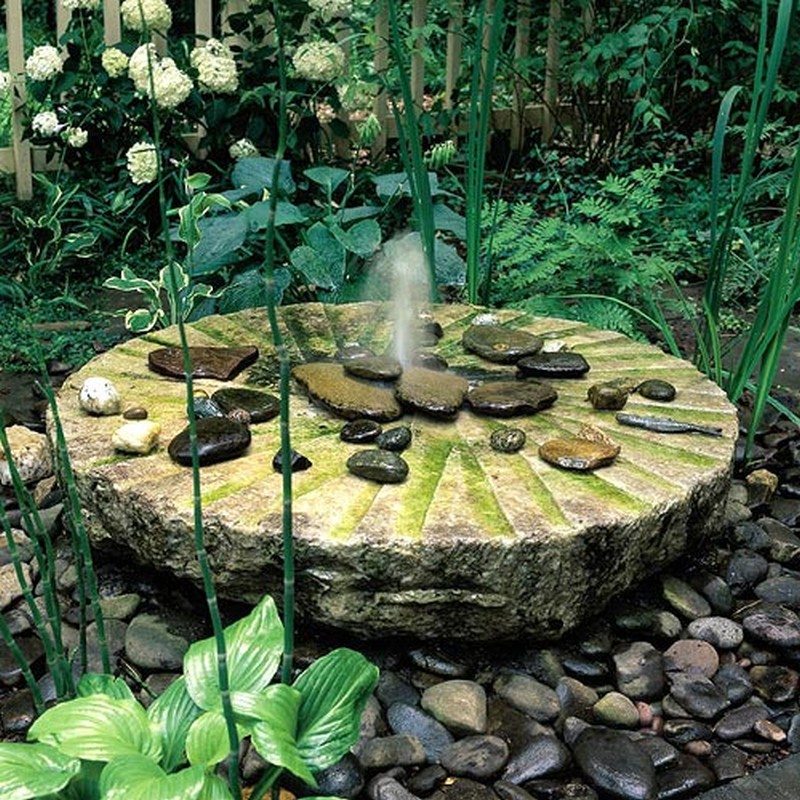
Materials:
- 1/2″ Copper Pipe
- Submersible Pump
- Waterproof Basin
- Stones (ones that can easily be stacked)
- Small Rocks (for covering the top of the pit)
- 1″ PVC Conduit
- 1/2 x 1/2″ Compression Female Adapter
- 1/2″ Ball Valve
- Aluminum Window Screen or Grill
- Composite Decking
- Drainage Gravel
- Wheelbarrow
- Electric Tape
- Marker
- Clear Silicone Adhesive
Tools:
- Shovel
- Measuring Tape
- Pipe Cutter
- Utility Scissors
- Drill
- Screwdrivers
- Handsaw
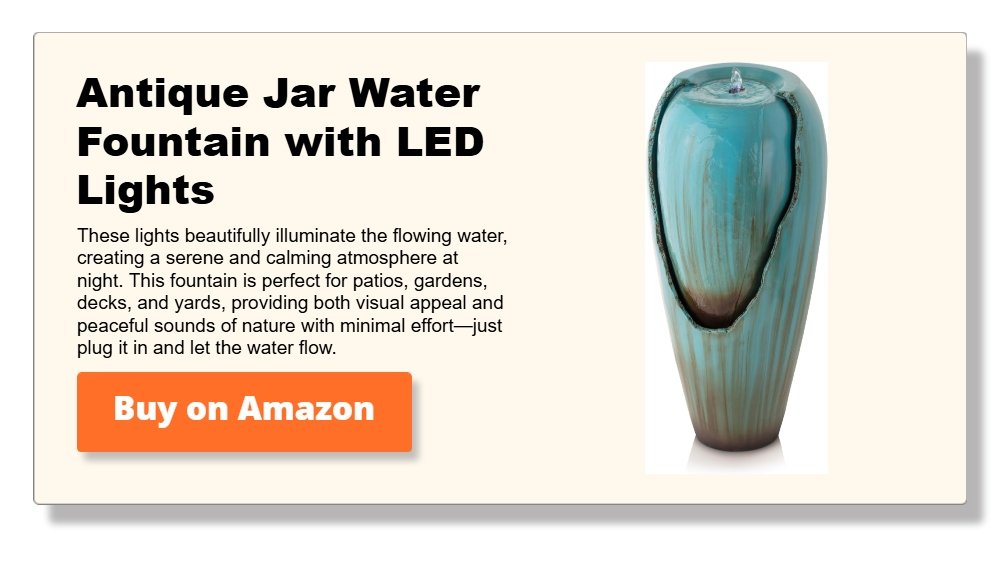
Steps:
Step 1: Choose and Prepare the Fountain Location
- Pick a flat, stable area in your garden where the fountain will be placed.
- Use a marker and measuring tape to outline the desired size of the fountain basin.
- Ensure the location has access to an electrical outlet for the submersible pump or plan for a solar-powered alternative.
Step 2: Dig the Basin Hole
- Using a shovel, dig a hole deep enough to accommodate the waterproof basin (about 12-18 inches deep, depending on your basin size).
- Place drainage gravel at the bottom of the hole for extra stability and water filtration.
- Set the waterproof basin into the hole, ensuring it sits level.
Step 3: Install the Plumbing System
- Attach the 1/2″ copper pipe to the submersible pump’s outlet.
- Fit the 1/2 x 1/2″ compression female adapter onto the pipe to create a secure connection.
- Add a 1/2″ ball valve to control the water flow.
- Insert the 1″ PVC conduit to guide electrical wiring safely underground if needed.
- Seal all connections with clear silicone adhesive to prevent leaks.
Step 4: Create the Fountain Structure
- Stack large stones over the waterproof basin, leaving a space for the copper pipe to run through the center.
- Drill a hole in the center of the top stone (if it doesn’t have one) to allow water to flow out.
- Thread the copper pipe through the stacked stones until it reaches the top.
- Use small rocks to fill gaps between stones for added stability.
Step 5: Secure the Basin Cover
- Cut a piece of composite decking or aluminum window screen to fit over the basin opening.
- Drill a hole in the center for the copper pipe to pass through.
- Secure the cover in place using screws and a drill.
- Arrange small rocks over the cover to create a natural-looking surface.
Step 6: Connect and Test the Pump
- Place the submersible pump inside the waterproof basin.
- Connect it to a power source using electric tape to secure any exposed wiring.
- Fill the basin with clean water.
- Turn on the pump and adjust the ball valve to control the water flow.
Step 7: Final Touches
- Add decorative elements like ceramic figurines, LED lights, or aquatic plants around the fountain.
- Check for leaks and ensure the water circulates properly.
- Enjoy your DIY garden fountain, knowing you created a stunning and peaceful garden feature!

How to Maintain a DIY Garden Fountain
Although a DIY garden fountain can be a lovely and soothing addition to your outdoor area, over time it may get clogged, unclean, or even broken without regular upkeep. Maintaining a functional and clean fountain guarantees that it will always be appealing and helps to stop pump failures and algae growth. Here’s how to keep your own garden fountain running nicely all year long.
Regular Cleaning to Prevent Algae and Debris Buildup
Quick accumulation of leaves, debris, and algae in your fountain will influence water flow and general look. Empty the basin often to keep it clean; gently brush or sponge the surfaces. Without endangering plants or animals, a modest vinegar or baking soda solution can help eliminate dirt. If algae development is a regular occurrence in your fountain, think about including a little hydrogen peroxide or environmentally friendly fountain cleanser to maintain water clarity.
Pump Maintenance for Optimal Performance
The heart of your fountain is the pump, hence maintaining proper running order guarantees a continual water flow. Frequent check of the pump intake helps to find obstructions brought on by dirt, leaves, or trash. To eliminate any obstructions, take the pump from the basin and rinse it under flowing water. Should mineral deposits develop, immerse the pump in a diluted vinegar solution to break any accumulation. Maintaining a clean pump reduces needless wear and increases its lifetime.
Refilling and Checking Water Levels
The decline in water level in your fountain brought on by evaporation could strain the pump and lead to overheating. Particularly in hot and dry conditions, check the water level minimum once a week. Always keep enough water in the basin to totally submerge the pump; if necessary, replace with filtered or distilled water to stop mineral deposits from developing.
Winterizing Your Fountain for Cold Weather
If you live in an area where temperatures drop below freezing, you’ll need to prepare your fountain for winter to prevent cracks and damage. Drain all water from the basin, remove the pump, and store it indoors. If your fountain is made of ceramic, concrete, or stone, cover it with a waterproof tarp or store it in a shed to prevent freezing and cracking. A heated water feature may be an option if you want to keep the fountain running year-round.
Preventing Mosquitoes and Stagnant Water Issues
Stagnant water can attract mosquitoes and other pests, making your fountain less enjoyable. Keeping the water circulating with a properly functioning pump is the best way to prevent this issue. You can also add floating mosquito dunks or natural deterrents like cinnamon oil to discourage insects from breeding in the water.
Inspecting for Leaks and Structural Damage
Over time, cracks or leaks may develop in your fountain’s basin, tubing, or seals. Check for damp areas around the base or a sudden drop in water level, which could indicate a leak. Small cracks can often be sealed with waterproof silicone or epoxy, but larger structural damage may require more extensive repairs or replacing specific parts.
Enhancing the Fountain with Seasonal Adjustments
A well-maintained fountain can be a year-round feature in your garden with small seasonal updates. In summer, consider adding floating flowers or LED lights for a decorative touch. During autumn, regularly clear out fallen leaves to prevent clogs. If you enjoy wildlife, add a heated element or bird-safe deicer in winter to keep the water flowing for birds and other small animals.
Proper care and routine maintenance ensure that your DIY garden fountain remains a beautiful and functional focal point for years to come. With a little attention, you can enjoy the soothing sound of flowing water while preventing common issues like algae buildup, pump failure, and leaks.
Garden Fountain Gallery
Click on any image to start the lightbox display. Use your Esc key to close the lightbox. You can also view the images as a slideshow if you prefer 😎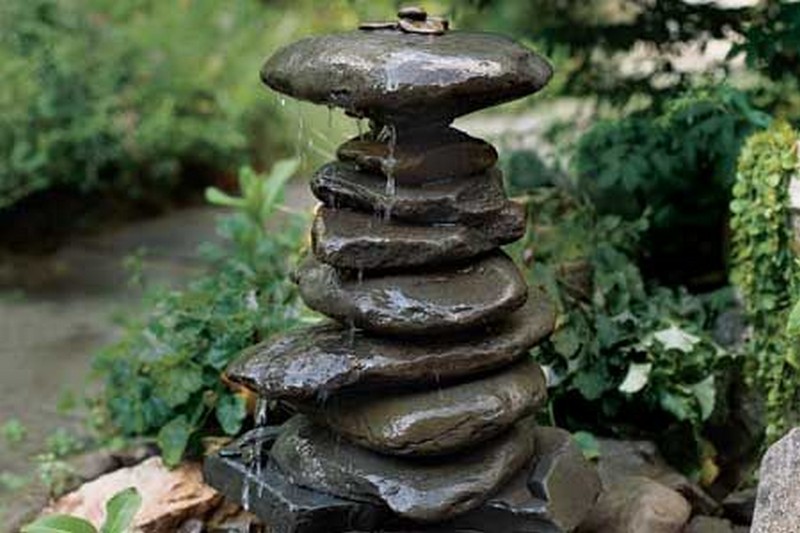



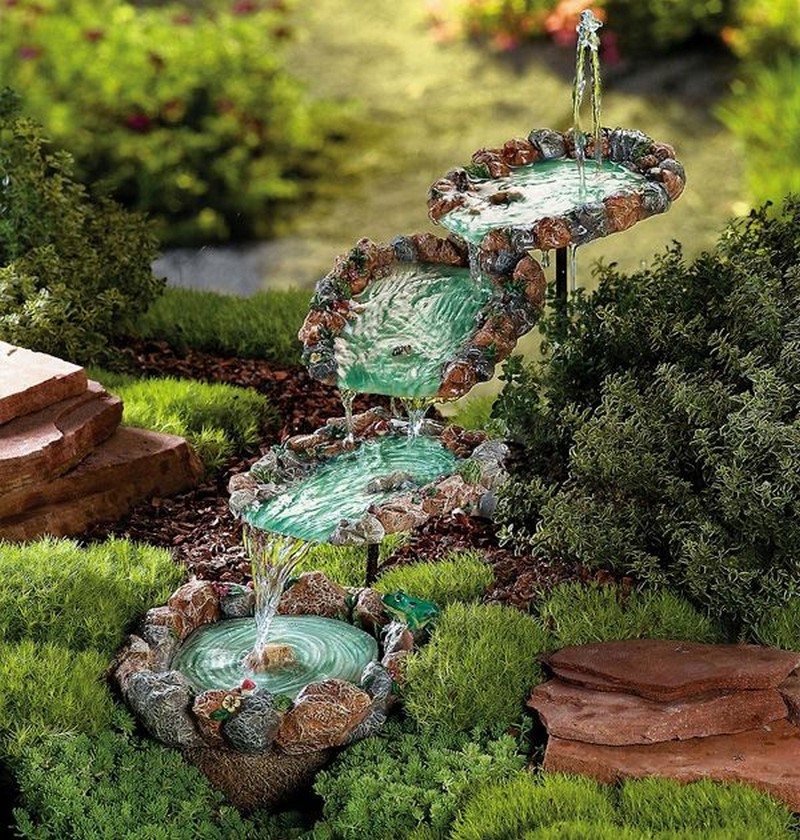
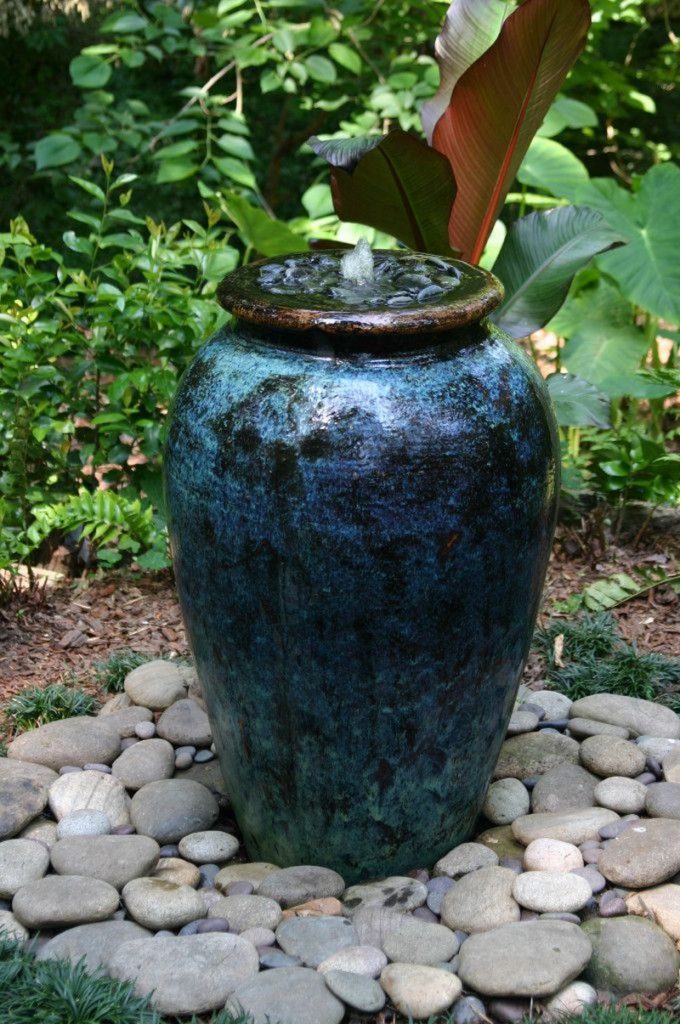
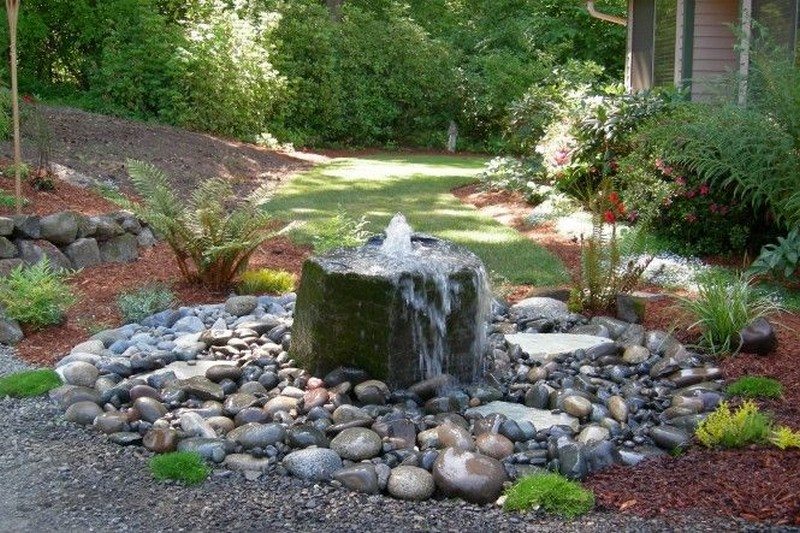
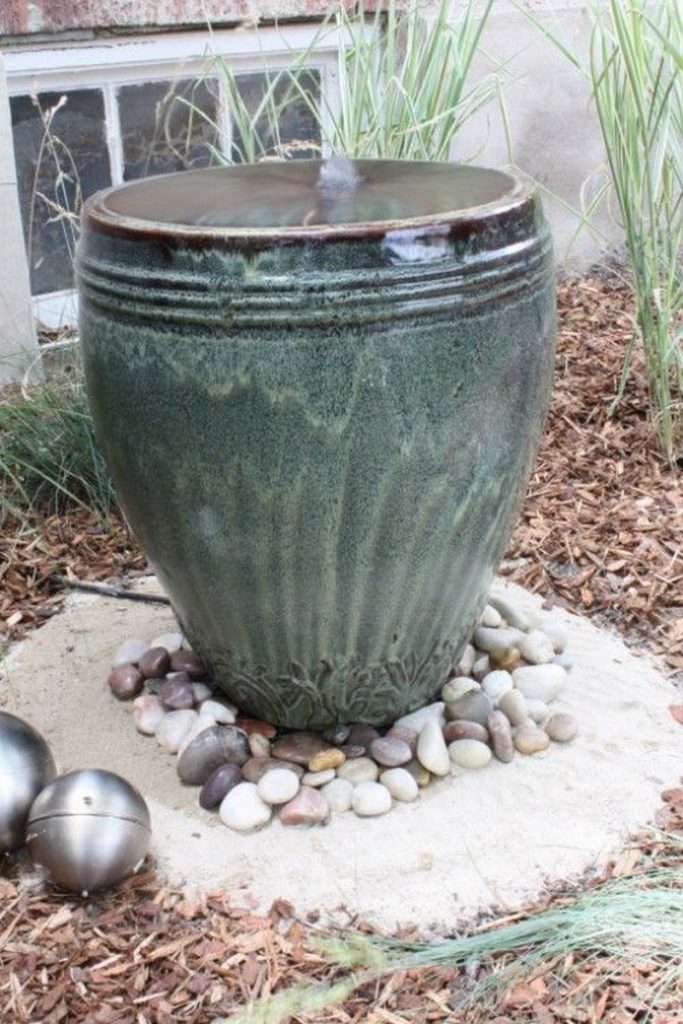
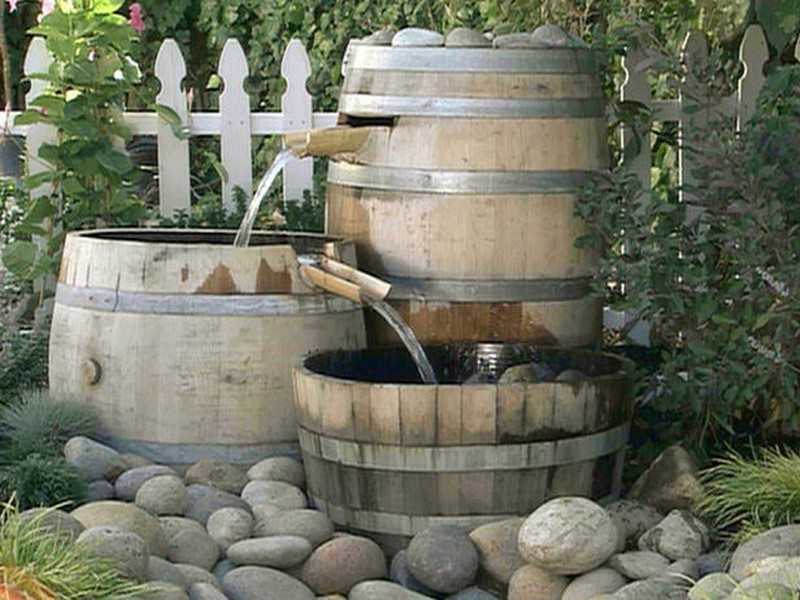


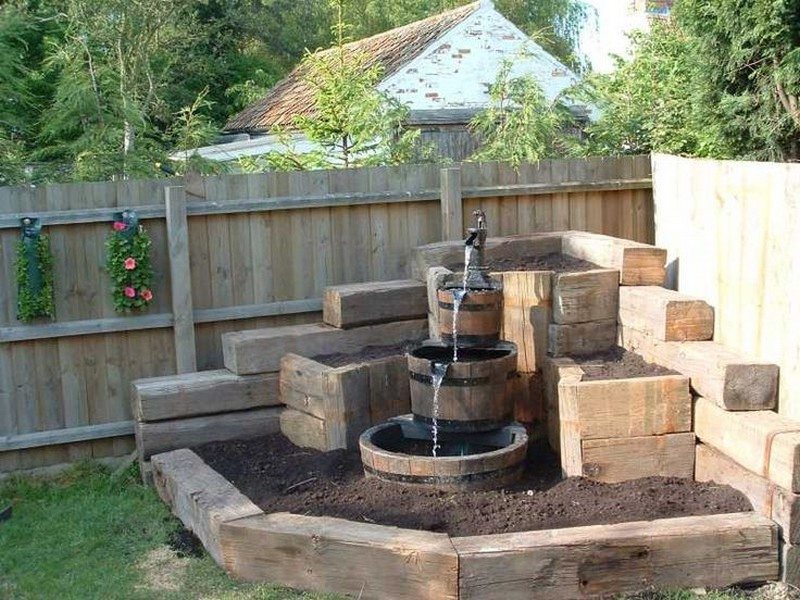
Creative Garden Fountain Ideas: Unique DIY Water Features
A garden fountain will turn your outside area into a peaceful haven. There are many ways to design a one-of- a-kind fountain out of common materials, regardless of your taste in a basic bubbling fountain or a complex multtiered water feature. These imaginative do-it-yourself backyard fountain ideas draw on distinctive designs.
Stacked Stone Fountain
A stacked stone fountain brings a natural, organic touch to any garden. Using flat, stackable stones, you can create a cascading effect that mimics the beauty of a mountain stream. A submersible pump hidden beneath the stones ensures a steady water flow, producing a gentle trickling sound that enhances the serene atmosphere. Positioning this fountain near ferns, moss, or shade-loving plants can create a woodland-inspired retreat. For a more dramatic effect, consider using stones of different colors or textures to enhance the visual depth of the fountain.
Vintage Container Fountain
A vintage container fountain is an excellent way to repurpose old household items while adding rustic charm to your garden. An old metal tub, wooden barrel, or ceramic pot can be transformed into a beautiful water feature with just a few modifications. Drill a hole in the bottom for a submersible water pump, and let the water flow over the edges for a soothing effect. You can add small pebbles, aquatic plants, or floating candles to enhance the aesthetic. This type of fountain works well in cottage-style gardens or as a focal point in a cozy patio setting.
Watering Can Waterfall
A watering can waterfall brings a whimsical and playful element to outdoor spaces. Using multiple watering cans, you can create a cascading waterfall effect by connecting them at different heights with a hidden water pump. As the water flows from one can to another, it adds both motion and sound to the garden, making it a delightful visual centerpiece. This design fits perfectly in country-style or farmhouse gardens. For a more artistic touch, consider using vintage painted watering cans or copper-finished metal cans that develop a patina over time.
Upcycled Urn Fountain
An upcycled urn fountain adds a touch of sophistication and timeless beauty to your garden. You can create a self-circulating water feature that looks like an elegant antique by repurposing an old garden urn or large ceramic vase. The pump is hidden inside, allowing the water to flow smoothly over the edges, creating a peaceful and artistic display. This type of fountain is perfect for formal gardens, courtyards, or Mediterranean-style landscapes. Placing it near stone pathways, climbing vines, or a seating area enhances its decorative appeal.
Birdbath Fountain with a Sprayer
A birdbath fountain combines functionality and beauty, providing a refreshing oasis for birds while adding movement to your outdoor space. By installing a solar-powered pump, you can create a gentle spray of water that keeps the bath fresh while attracting songbirds to your garden. This is a great eco-friendly option, as it operates without electricity and only needs direct sunlight. Consider placing decorative pebbles or floating flowers in the birdbath to add visual interest. This fountain is ideal for wildlife-friendly gardens or backyard retreats.
Galvanized Bucket Fountain
A galvanized bucket fountain is a simple yet charming water feature that can be easily assembled. Using a galvanized tub as a base, you can place a submersible pump inside and let the water rise through a pipe before spilling over small rocks. This design is lightweight and portable, making it easy to reposition in your garden. It works well in rustic settings, farmhouse gardens, or patios. You can personalize the look by adding small aquatic plants, LED lights, or decorative stones to blend the fountain with the surrounding landscape.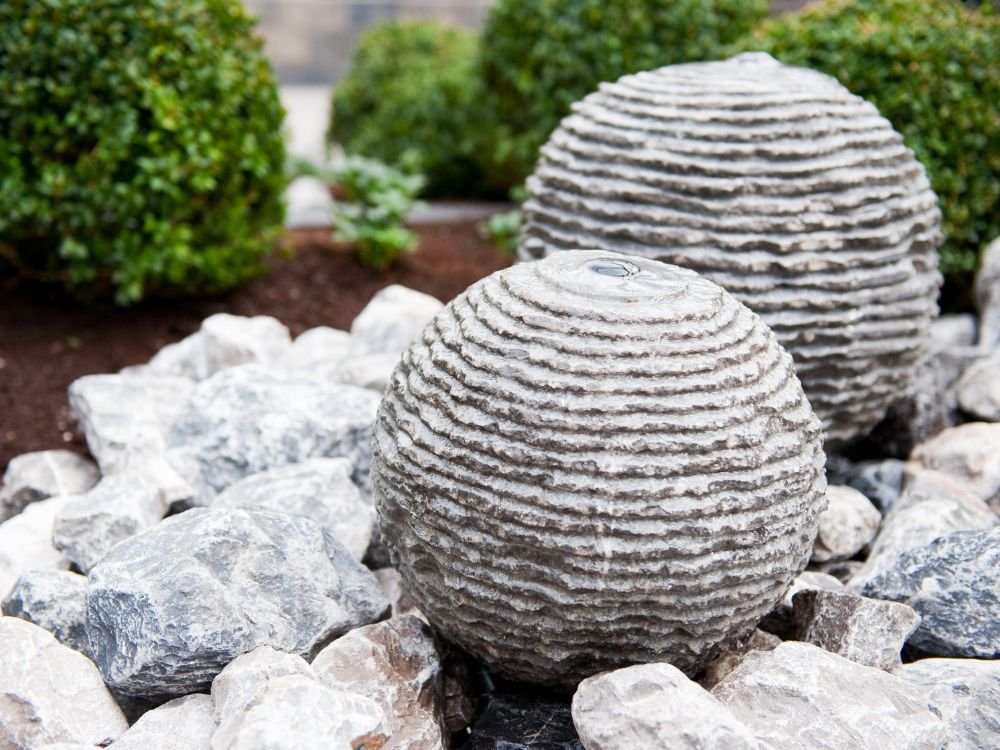
Bubbling Water Globe
A bubbling water globe brings a modern, contemporary feel to any outdoor setting. A pump underneath pushes water upwards by placing a large glass orb or resin sphere on top of a hidden water reservoir, creating a gentle bubbling effect. This design is sleek, minimalistic, and perfect for small gardens, patios, or rooftop spaces. It adds a calming sound without taking up much space, making it a great option for urban gardens or Zen-inspired landscapes. Using LED lights or colored glass spheres can enhance the nighttime appeal of this fountain.
Half-Barrel Cascading Fountain
A half-barrel cascading fountain brings a rustic, old-world charm to any outdoor space. By cutting a whiskey barrel in half, stacking them in tiers, and using a submersible pump, you can create a cascading flow of water from the top down. This design is sturdy and weather-resistant, making it perfect for outdoor use. It works especially well in farmhouse gardens, vineyard-inspired landscapes, or wooden deck areas. To enhance its look, consider surrounding the barrels with wildflowers, creeping vines, or decorative gravel.
Three-Tiered Stone Fountain
A three-tiered stone fountain creates a classic and timeless focal point in any garden. By stacking three progressively smaller stone basins, you can design a multi-level fountain where water cascades smoothly from one layer to the next. The continuous water flow adds a peaceful and meditative atmosphere to the space. This type of fountain is well-suited for traditional gardens, courtyard settings, or near a garden path. Adding moss, ferns, or ivy around the base enhances the natural aesthetic, making it blend seamlessly with its surroundings.
Rock Waterfall Feature
A rock waterfall feature brings the tranquility of a natural stream into your garden. By arranging flat stones around a waterproof container, you can mimic the look of a real riverbed. A hidden pump recirculates the water, creating a gentle waterfall effect. This type of fountain pairs well with lush greenery, ferns, or ornamental grasses to give it a woodland or tropical feel. You can also incorporate small koi fish or floating plants in the water basin to create a miniature pond ecosystem.
A DIY garden fountain can transform any outdoor space, adding visual interest, movement, and a soothing sound. Whether you prefer a rustic, modern, or natural look, there’s a fountain design to match your style. By repurposing materials and choosing the right placement, you can create a one-of-a-kind water feature that enhances your garden’s beauty year-round.
Conclusion
A DIY garden fountain adds charm, movement, and a peaceful ambiance to any outdoor space. It can remain a stunning focal point for years with the right design, materials, and regular maintenance. Whether you prefer a rustic, modern, or natural look, creating your own fountain is a rewarding project that enhances both the beauty and tranquility of your garden.
If you liked this project, you will also like viewing these easy DIY projects…






